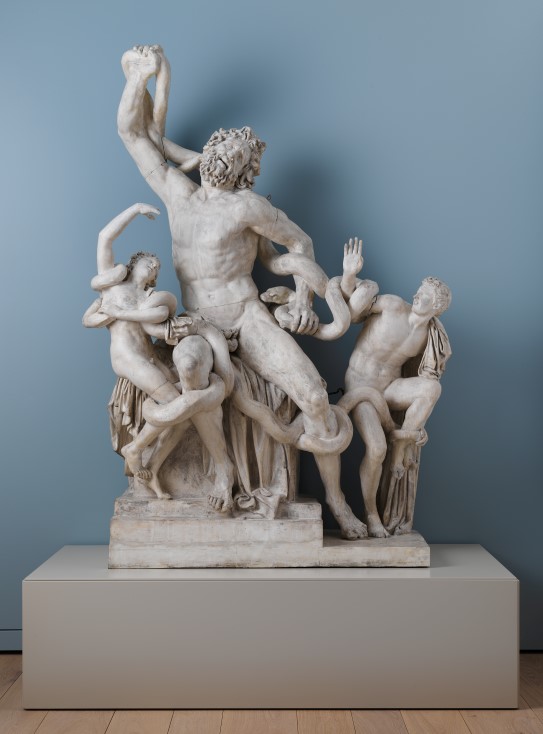Laocoön and His Sons
Unidentified artist
Transcription
Narrator
One day in 1506, a wine merchant finds a treasure in his field outside Rome. A beautiful, ancient marble sculpture that has been buried in the ground for over a thousand years.
Through layers of soil and sand, a bearded face with flowing hair can be seen. Something that looks like a meandering snake.
The foremost experts on Roman sculptures were sent from the Vatican to investigate the discovery. Among them, the sculptor and painter Michelangelo.
They realized straight away what they had found.
This had to be the sculpture "Laocoön and his sons". In texts from ancient Greece and Rome, this work was referred to as one of the most wonderful works made in antiquity.
The work was supposed to represent Laocoön who - according to the stories - was a priest in the city of Troy.
Troy was at war with the Greek city-states, and Laocoön was punished by the gods because he tried to warn the people of Troy from letting a large wooden horse, that hid the Greek army, into the city. To protect the Greek army, the goddess Athena sent two sea serpents to kill Laocoön and his two sons.
It is this moment that the famous sculpture shows Laocoön and his sons, entwined by writhing serpents.
The marble sculpture is said to have once stood in Emperor Titus' palace in Rome, but when the Roman Empire collapsed, this work of art also disappeared.
No one knew where it had gone.
But on this day in 1506, over a thousand years after it disappeared, "Laocoön and his sons” reappeared.
The experts from the Vatican had the statue dug up, put back together and placed it in the Vatican Museum. But not only that. The sculpture also inspired other artists - Michelangelo, was fascinated by the muscular play of poor Laocoön as he fights the snakes. Something we can see in Michelangelo's own statues and paintings.
Plaster casts were also made and sold to other museums around the world.
So that we here today - can let ourselves be impressed by the very best of sculptural art from ancient Rome.